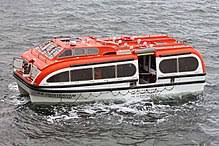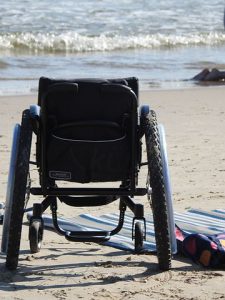Cruising with reduced mobility
In 2010, a new European regulation prevented cruise lines and tour operators from refusing to sell a cruise to anyone with a disability or reduced mobility (unless on specific safety grounds). This led many cruise companies to take extra measures to ensure their ships and facilities were accessible to everyone. As a result, cruising has become even easier for people with reduced mobility. And this is good news.
In fact, cruising can be especially relaxing for those with mobility issues for the same reasons as it is for those without: only needing to unpack once, the ability to see multiple destinations, a wide variety of great entertainment and activities.
Having said that, not every ship or cruise line is the same when it comes to accessibility, and it pays to do some investigation before booking a cruise. For example, newer ships tend to have been designed with accessibility in mind, whereas some older and smaller ships can have issues such as narrow isles and lack of automatic doors.
Below are a few other considerations which those with reduced mobility or other accessibility issues should take into account before booking a trip.
Ensuring accessibility
Most cruise lines have an accessibility department, which is happy to answer questions. Make sure that you ask detailed questions. For example, if you enjoy swimming, ask whether the pools have lifts or submersible chairs to make it easier to get in and out.
You should also keep in mind that all ships will have a limited number of accessible cabins, and these can book up far in advance. For example, Celebrity Cruises newest ship, the Celebrity Edge, has 25 accessible staterooms out of a total of 1,467.
While it is easy enough to book a cruise yourself, if you do have mobility issues, you may also want to consider using a travel agent with specialized knowledge, such as Wheelchair Escapes. A travel agent with experience in mobility issues can recommend the most accessible ships. They can also coordinate transportation to and from the ship and organize accessible shore excursions. Travel agents can also arrange special cruises for groups with particular needs, such as a groups of wheelchair users.
Choosing the right itinerary and the right ship
Many people focus on the ship amenities without giving enough consideration to how they will get from ship to shore for excursions. Sometimes, ships do not dock, but anchor offshore and shuttle passengers to shore in tenders (small boats).

Most tenders are not wheelchair accessible, and so people who cannot confidently walk at least a few steps must stay on the ship. Some cruise lines will take mobility devices in the tenders, but have size and weight limits. Holland America is one line with a wheelchair-accessible tender transfer system.
Also consider the destination ports. Are there cobblestone streets, stairs, a lack of accessible transportation?

Choosing the right ship is equally important. Amenities such as accessible bathrooms in public areas, menus in Braille, accessible seating at all dining areas, doors that can accommodate scooters, and the availability of sign language interpreters for events can make a huge difference. You should also check the ships’ policies – some may require guests with certain disabilities to travel with a caregiver.
Bringing a mobility device
You will almost always need to bring your own wheelchair or mobility device with you. Most ships do carry wheelchairs on board, but these are reserved for emergencies. There are vendors, such as Special Needs at Sea and Scootaround who rent mobility devices around the world. These vendors can also arrange to deliver devices to your stateroom. Special Needs at Sea also rents (and delivers) other types of medical equipment, such as bed rails and liquid oxygen.
You may also want to have your mobility device serviced beforehand – it can be difficult to find spare parts in port. Also keep in mind that all mobility equipment must be stored and charged in the users’ cabin.
What about autism-friendly ships?
Travel can be particularly fraught for those with children who have autism or other developmental disabilities, even without reduced mobility. However, some cruise lines go the extra mile. Royal Caribbean, for example, has an autism initiative. This includes priority check-in, boarding and departure, and special dietary accommodations including making any meal gluten-free or dairy-free meals. It also provides flexible age groupings and toilet-trained policy exception in the Adventure Ocean kids clubs.
Can you bring a service animal?
While most ships do not allow pets, an exception is generally made for service animals. However, the definition of a service animal can vary from cruise line to cruise line. While seeing eye and hearing ear dogs are generally accepted, emotional support animals may not be allowed.

If you have a service animal, make sure that you find out in advance what provisions are made for the animal to relieve itself, and whether it is allowed in all parts of the ship. You will need to provide food yourself. You should also check to see if the animal will be allowed to disembark – most countries have strict regulations around this.
These often involve animal health and safety. For example, any dog disembarking in the UK must have a pet passport, be microchipped and given a rabies shot at least 21 days before departure. Flea, tick and tapeworm treatments must also be administered before boarding, and owners must produce a vet-signed health declaration.
For any questions about flying and airport services please have a look to this useful→ link.
